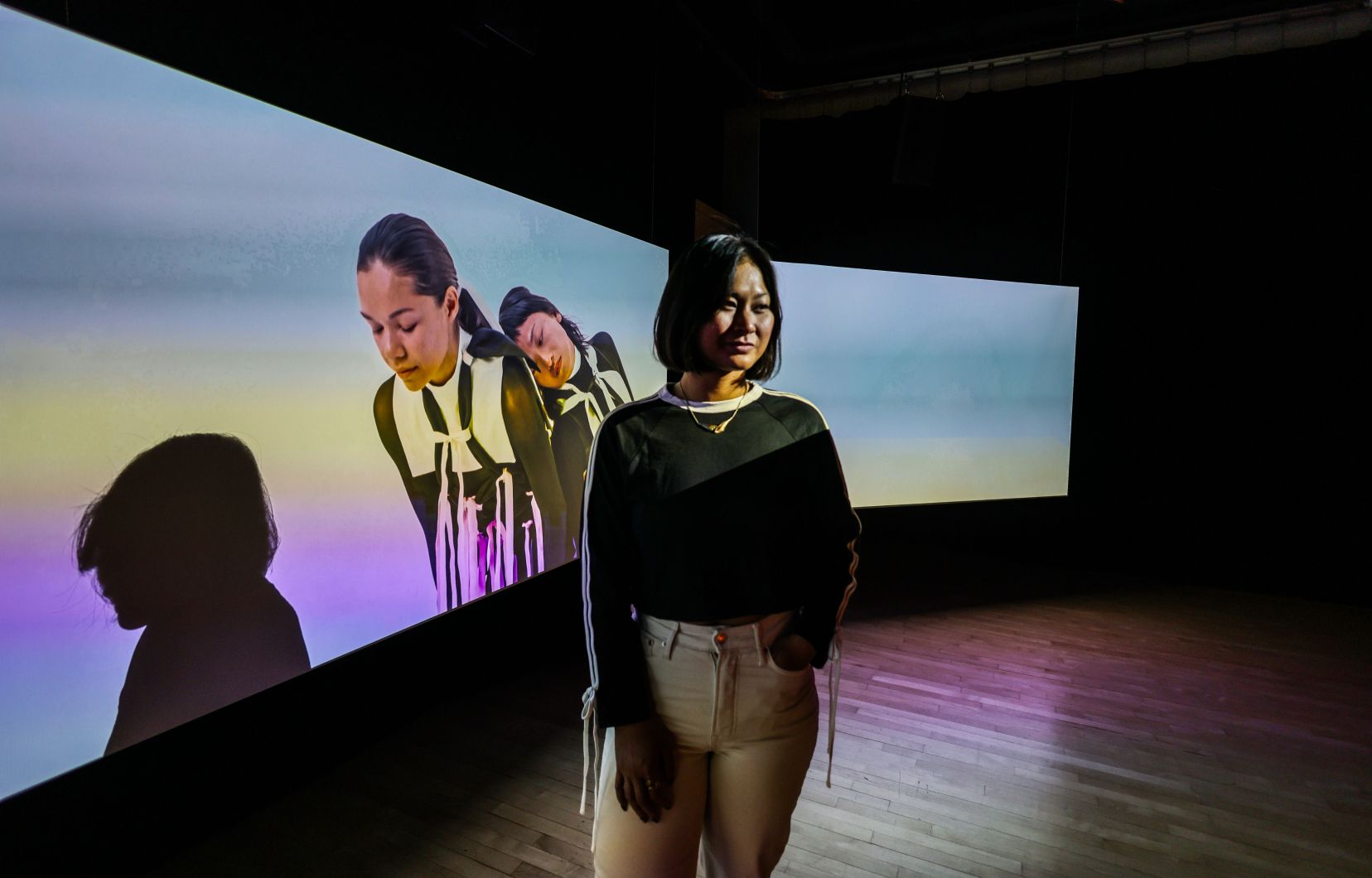The exhibition Connecting From the Inside Outby multidisciplinary artist My-Van Dam, addresses intergenerational trauma and how healing processes must be both individual and collective.
Born to refugee parents who fled the Vietnam War, Mme Dam drew inspiration from her family history to shape her work.
“It was very difficult [pour mes parents] to talk about it. We didn’t really have an answer — it was a bit like something unsaid that was in a family sphere, she says. But it brought me a lot of questions about the impact of the war, both on them personally — because they were the ones who experienced it — but also on how I experienced it as a child. »
Drawing inspiration from his experience, Mme Dam created his multidisciplinary facility for all those afflicted by intergenerational trauma.
“When we think about healing, we also automatically think about how trauma lives inside our bodies,” she explains. The hanging sculptures, for example, represent, with tensions and movements, the evolution of a healing process.
The artist played with shapes and different gradients of transparency to represent the fragmentation of traumatic memories, moments of lucidity and the defense mechanisms that accompany people in healing.
Healing through movement
Movement is omnipresent in this exhibition which fuses dance and visual arts. Mme Dam, who studied dance in high school before doing a bachelor’s degree in visual and media arts at the University of Quebec in Montreal, believes that movement can help us heal from the inside by dislocating trauma that has been frozen in our being. “It’s inspired by my personal healing journey, where I followed a therapy called somatic experiencing “, she says. During her therapy, the artist realized that the somatic experiencing is also present in the field of dance and she wanted to integrate it into her artistic practice.
The sculptures that Mme Dam created represent these concepts, they are “objects of solidarity” presented in a video installation where four dance artists use them to connect their bodies together during an improvised performance of dance and song. Solidarity tools, therefore, to generate collective healing and allow people to bond together.
In performance, dance artists join and isolate intermittently, to reflect the interdependence between collective healing and personal work. “We can’t think of others either if we don’t take care of ourselves, then vice versa,” explains M.me Damn.
The work demonstrates that the healing process is non-linear, that trauma is both complex and nuanced. “When we talk about healing, are we able to accept that sometimes we have more moments of lucidity, then that we are more vulnerable? » she asks herself.
The artist wants all those who have experienced family and community trauma to be able to find themselves in his work. “It is not because our family did not experience the war that it is not also legitimate to think about healing. » She also wants, in these times when there are many armed conflicts and wars in the world, to offer a little hope to all the people who are affected by these situations. “Through the exhibition, [je voulais affirmer] that there are tools that allow us to […] quietly move forward individually and collectively in a context of horrible wars that affect us globally. »
